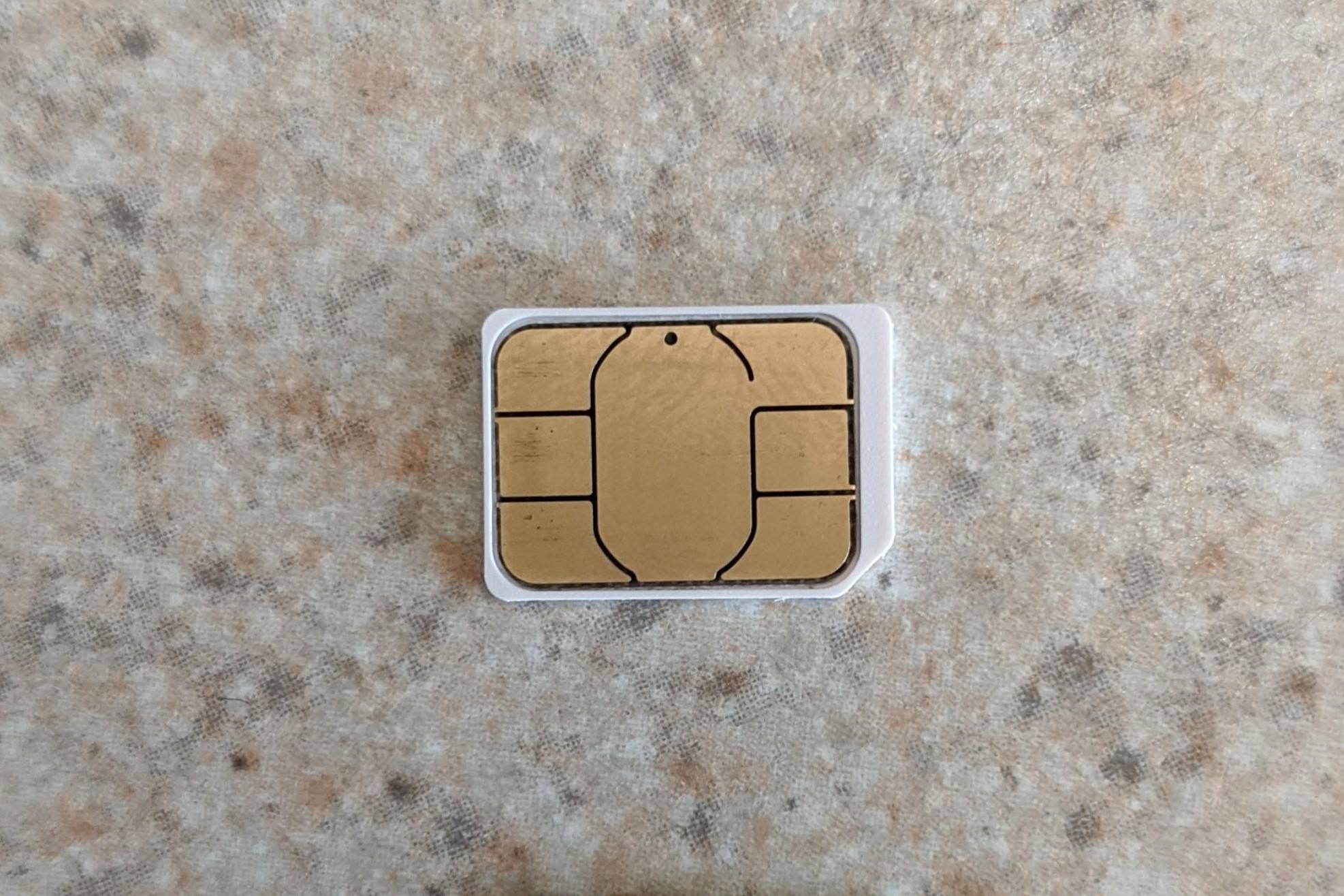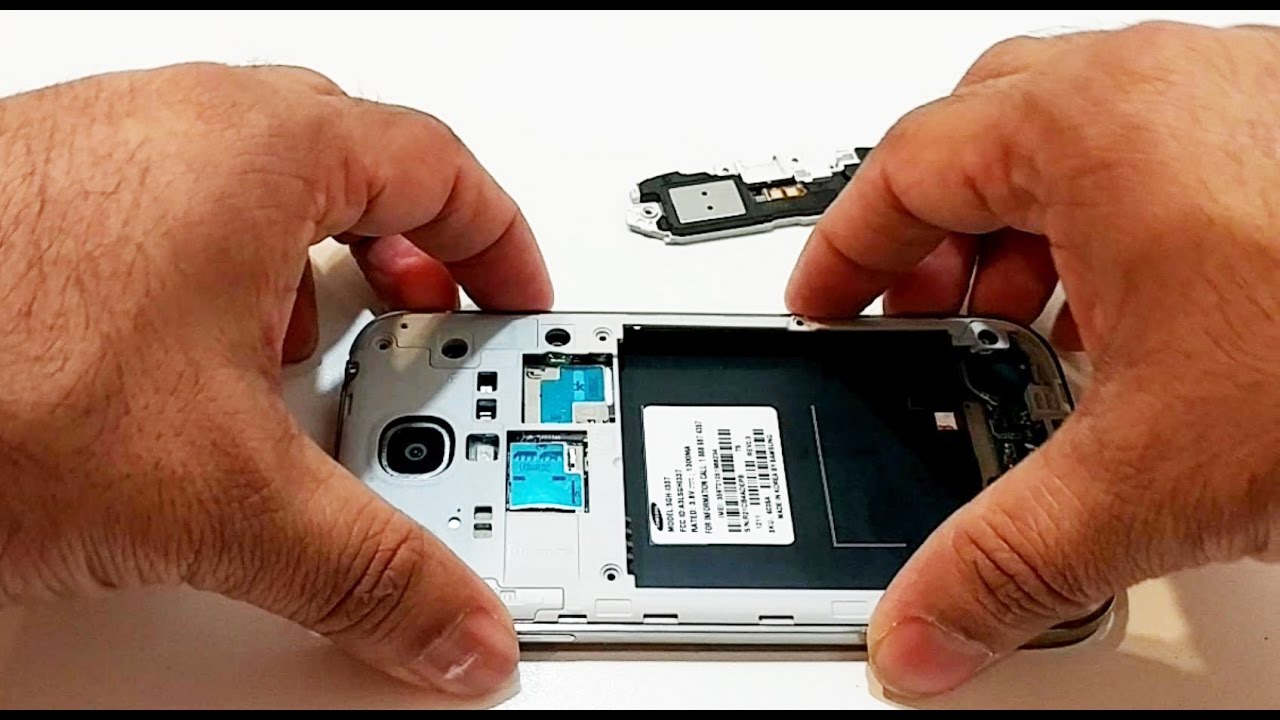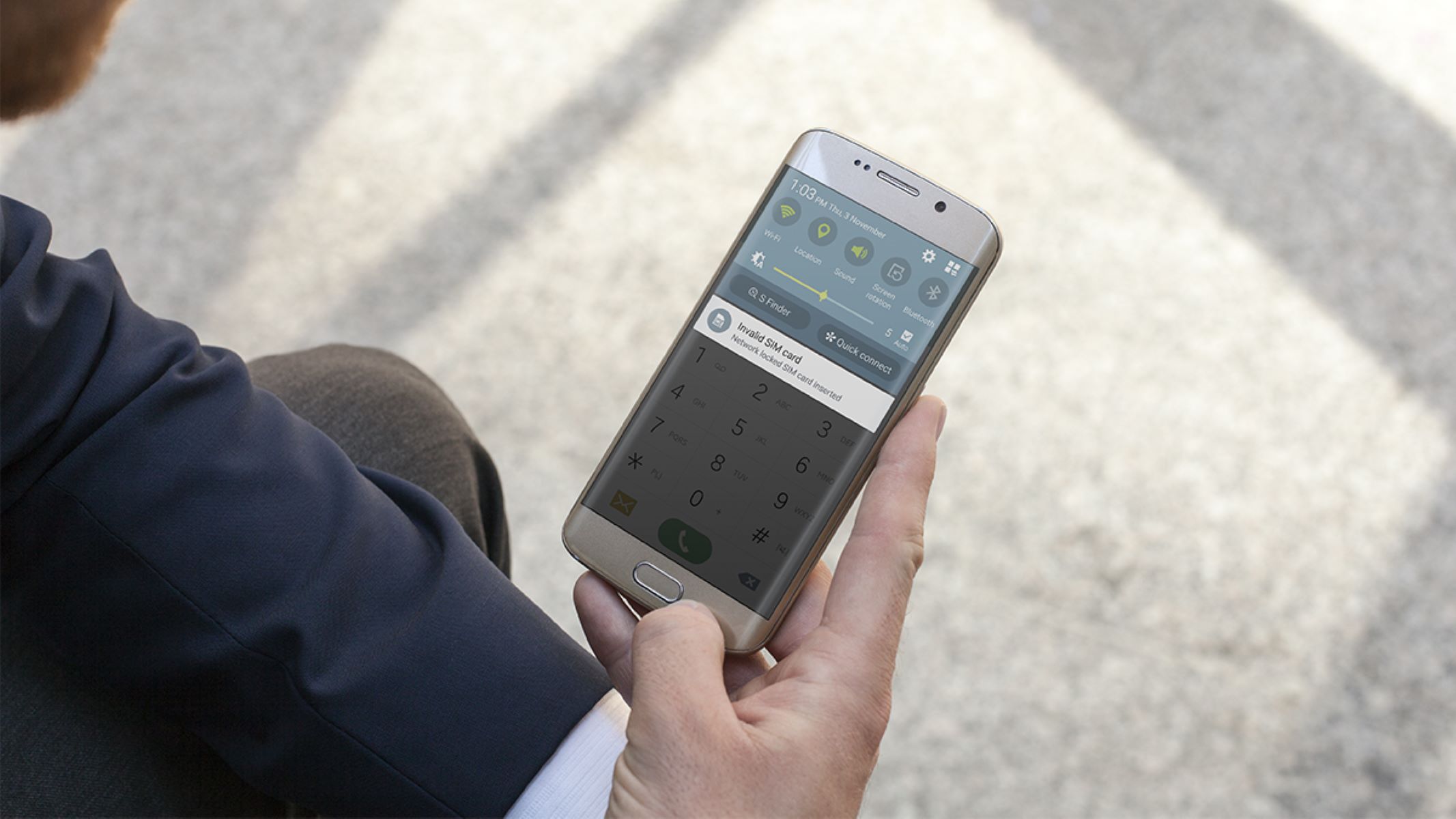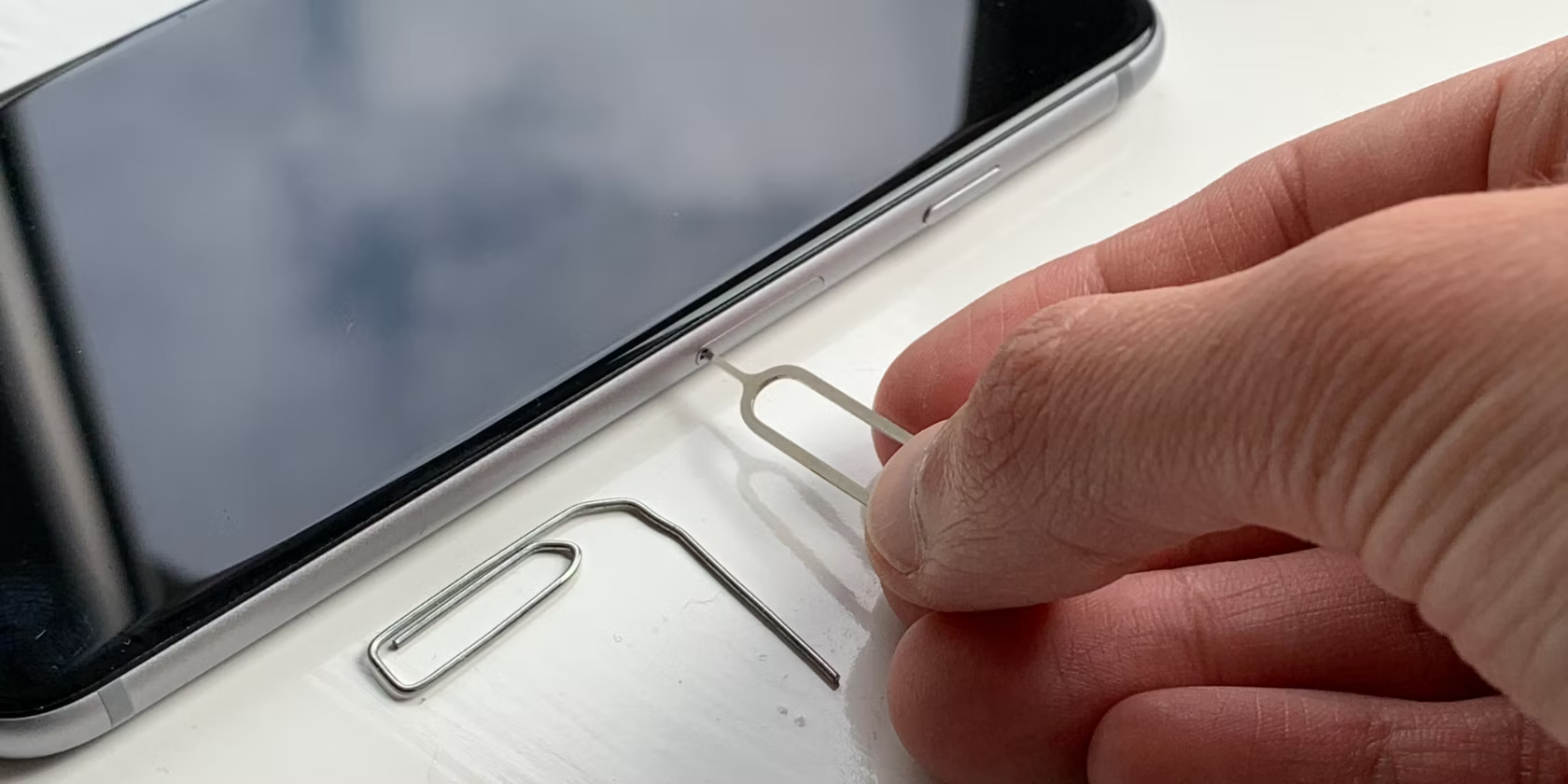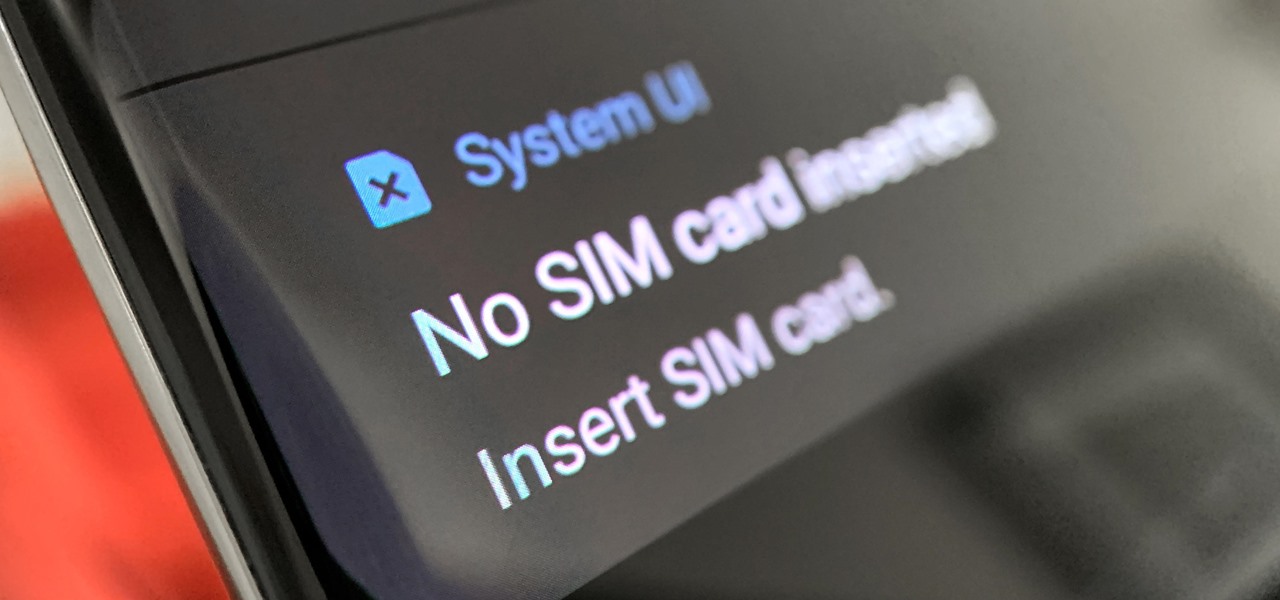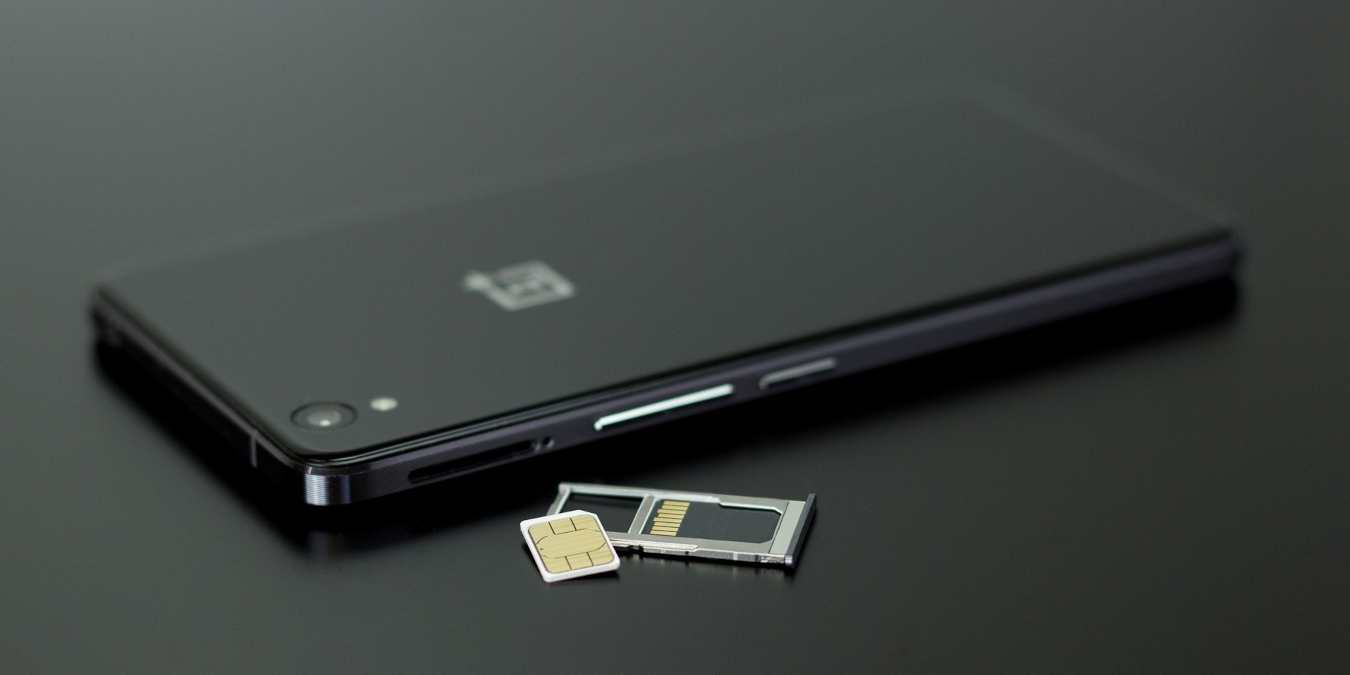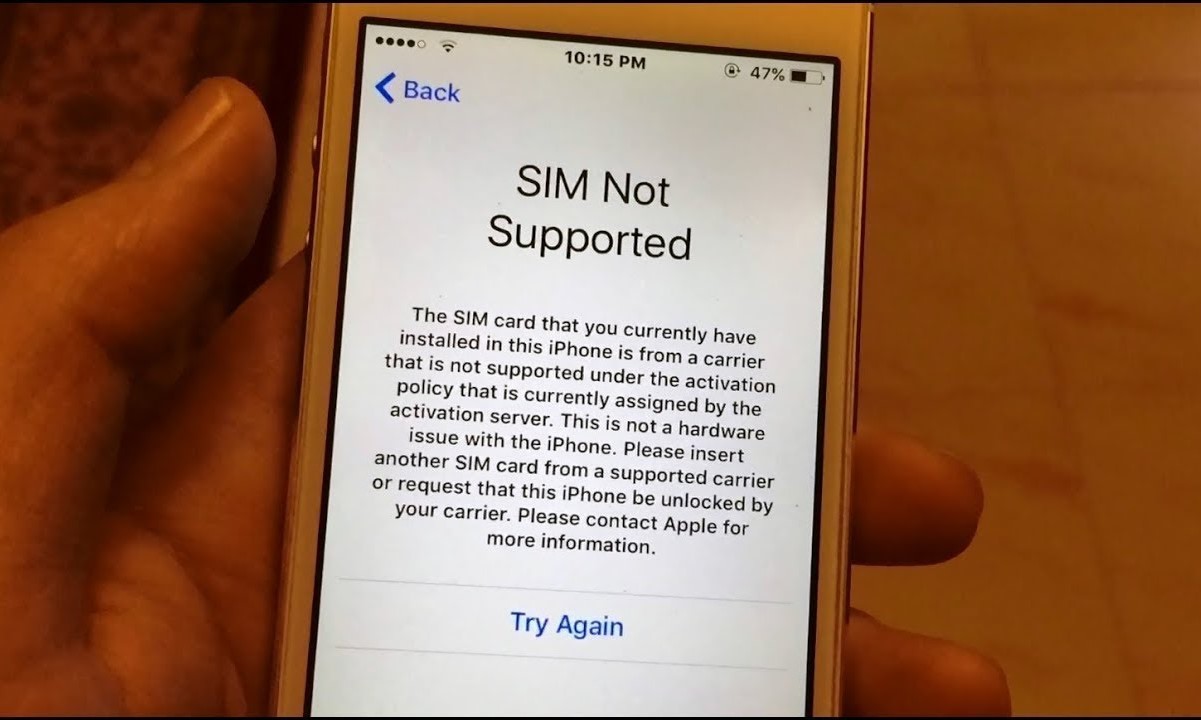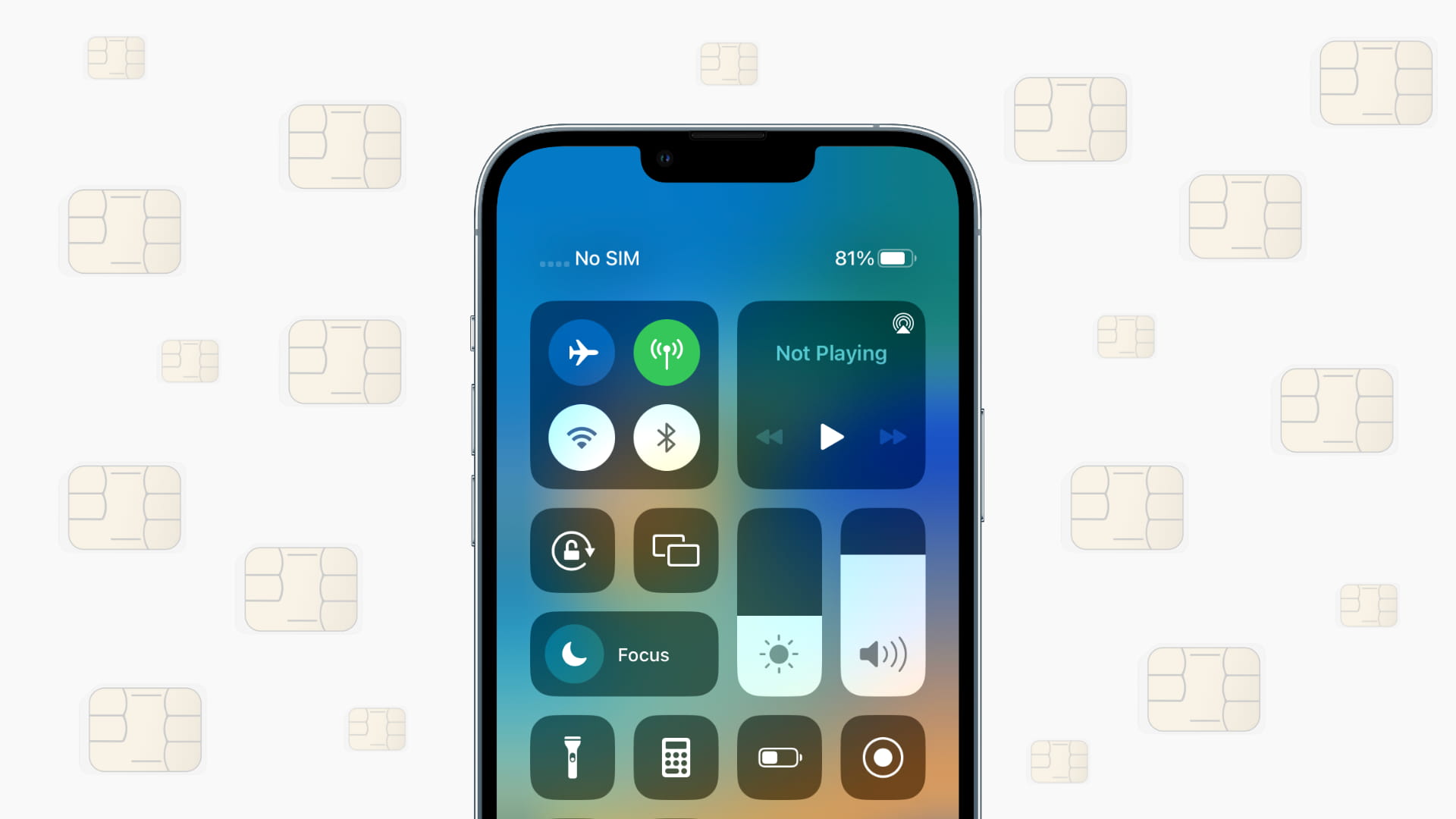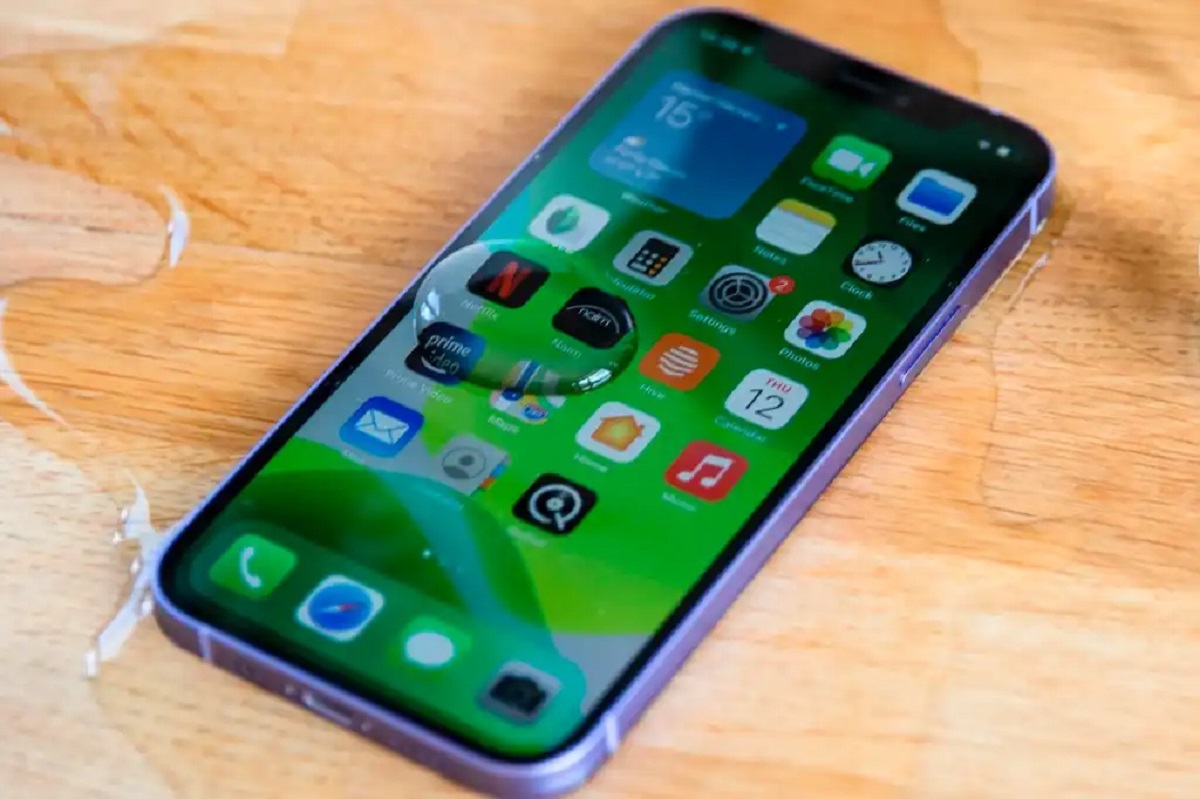Introduction
Welcome to our comprehensive guide on fixing scratched SIM cards. In today's digital age, mobile devices have become an indispensable part of our daily lives. From staying connected with loved ones to managing professional responsibilities, our reliance on smartphones and other mobile gadgets is undeniable. At the heart of these devices lies a small but mighty component known as the Subscriber Identity Module (SIM) card. This tiny chip plays a crucial role in enabling communication by storing essential information such as contact details, network authorization, and text messages.
Despite their small size, SIM cards are prone to damage, with scratches being a common issue. A scratched SIM card can lead to connectivity problems, including signal loss, call drops, and data transmission issues. Fortunately, with the right knowledge and techniques, it's possible to address these scratches and restore the functionality of the SIM card.
In this guide, we will walk you through the essential steps to effectively address scratched SIM cards. Whether you've accidentally mishandled your SIM card or it has sustained wear and tear over time, this guide will equip you with the necessary tools and methods to tackle this common issue. By following these steps, you can potentially save time and money by avoiding the need for a replacement SIM card.
So, if you've ever found yourself frustrated by a scratched SIM card and wondered if there's a solution, you're in the right place. Let's dive into the step-by-step process of assessing the damage, gathering necessary materials, cleaning the SIM card, using a soft eraser, and testing the SIM card to ensure it's back in optimal working condition. Get ready to breathe new life into your scratched SIM card and regain seamless connectivity on your mobile device.
Step 1: Assessing the Damage
Before diving into the process of fixing a scratched SIM card, it's crucial to thoroughly assess the extent of the damage. Scratches on a SIM card can vary in severity, and a proper evaluation will help determine the most suitable approach for restoration.
Begin by examining the surface of the SIM card under good lighting. Look for any visible scratches, dents, or abrasions. It's essential to handle the SIM card with care during this inspection to avoid causing further damage. Take note of the location and depth of the scratches, as this information will guide the subsequent steps in the restoration process.
Next, consider the impact of the scratches on the SIM card's functionality. Are you experiencing issues with signal reception, call quality, or data connectivity? Assess whether the scratches align with the areas where the SIM card makes contact with the device's SIM tray. These points of contact are critical for establishing a secure connection, and scratches in these areas can disrupt the transmission of data and signals.
Furthermore, evaluate the overall condition of the SIM card. Are there any signs of corrosion, dirt, or foreign substances that may have accumulated in the scratched areas? Such contaminants can exacerbate connectivity problems and must be addressed during the restoration process.
In some cases, the scratches may be superficial and have minimal impact on the SIM card's performance. However, deeper or multiple scratches can significantly hinder its functionality. By thoroughly assessing the damage, you'll gain a clear understanding of the specific challenges posed by the scratches and be better prepared to address them effectively.
Remember, the goal of this assessment is to gather essential information that will inform the subsequent steps in the restoration process. By taking the time to evaluate the damage, you'll be better equipped to proceed with confidence and precision, ultimately increasing the likelihood of successfully restoring your scratched SIM card to optimal working condition.
Step 2: Gathering Necessary Materials
Once you have assessed the damage to your SIM card, the next crucial step is to gather the necessary materials for the restoration process. Having the right tools at your disposal is essential for effectively addressing the scratches and ensuring that the SIM card is restored to optimal functionality.
Here's a comprehensive list of materials you'll need:
-
Soft Microfiber Cloth: A soft microfiber cloth is an indispensable tool for cleaning the surface of the SIM card. It is essential to use a gentle, lint-free cloth to avoid causing further damage to the delicate components of the SIM card.
-
Isopropyl Alcohol: Isopropyl alcohol, also known as rubbing alcohol, is an effective solvent for removing dirt, oils, and other contaminants from the surface of the SIM card. When used in conjunction with a soft cloth, it can help ensure that the SIM card is thoroughly cleaned before further restoration steps are taken.
-
Soft Eraser: A soft eraser, such as a rubber pencil eraser, is a valuable tool for addressing superficial scratches on the SIM card. The soft, non-abrasive nature of the eraser allows for gentle buffing of the scratched areas without causing damage to the SIM card's contacts.
-
Compressed Air Canister: A canister of compressed air is useful for removing any loose particles or debris from the surface of the SIM card and its contacts. It provides a gentle yet effective method for clearing away contaminants that may have accumulated in the scratched areas.
-
Magnifying Glass or Loupe: A magnifying glass or loupe can be beneficial for examining the scratches on the SIM card with greater precision. This tool can help you identify the depth and extent of the scratches, enabling you to tailor your restoration approach accordingly.
-
Soft Brush: A soft-bristled brush, such as a clean makeup brush or a dedicated electronics brush, can aid in the removal of fine particles and dust from the SIM card's surface. It is essential to use a brush with soft bristles to avoid causing any damage to the delicate components.
By ensuring that you have these essential materials on hand, you'll be well-prepared to proceed with the subsequent steps in the restoration process. Each of these tools plays a vital role in addressing the scratches on the SIM card and restoring its functionality. With the necessary materials at your disposal, you can approach the restoration process with confidence and precision, increasing the likelihood of a successful outcome.
Step 3: Cleaning the SIM Card
Cleaning the SIM card is a crucial step in the restoration process, as it sets the foundation for addressing the scratches and ensuring optimal functionality. By thoroughly cleaning the surface of the SIM card, you can remove dirt, oils, and other contaminants that may have accumulated in the scratched areas, preparing the card for further restoration steps.
To begin the cleaning process, gently wipe the surface of the SIM card with a soft microfiber cloth. The cloth should be clean and free of lint to avoid introducing any additional particles that could further compromise the SIM card's integrity. This initial wiping helps remove loose debris and surface contaminants, providing a clear view of the scratches and the areas that require focused cleaning.
Next, dampen a corner of the microfiber cloth with isopropyl alcohol. Isopropyl alcohol is an effective solvent for dissolving oils, dirt, and grime without leaving behind residue. Carefully wipe the scratched areas of the SIM card with the dampened cloth, using gentle, circular motions. This process helps lift and remove stubborn contaminants from the surface, ensuring that the SIM card is thoroughly cleaned before proceeding with the restoration.
For areas that are difficult to reach with the cloth, a soft brush can be used to gently dislodge any remaining particles. The soft bristles of the brush ensure that the delicate components of the SIM card are not damaged during the cleaning process. By employing a combination of the microfiber cloth and a soft brush, you can effectively address both the visible scratches and any hidden contaminants that may be affecting the SIM card's performance.
Once the surface of the SIM card has been cleaned, a canister of compressed air can be used to blow away any remaining particles or debris. Holding the canister upright, direct short bursts of compressed air onto the SIM card to ensure that any loose contaminants are dislodged and removed. This step further enhances the cleanliness of the SIM card, preparing it for the subsequent restoration techniques.
By meticulously cleaning the SIM card, you create an optimal environment for addressing the scratches and restoring its functionality. The combination of gentle wiping, isopropyl alcohol cleaning, soft brush usage, and compressed air treatment ensures that the SIM card is free from contaminants that could impede the restoration process. With the SIM card now thoroughly cleaned, it's time to proceed to the next step in the restoration journey.
Step 4: Using a Soft Eraser
After thoroughly cleaning the SIM card, the next step in the restoration process involves using a soft eraser to address the scratches that may be affecting its functionality. A soft eraser, such as a rubber pencil eraser, is an effective tool for gently buffing and minimizing the appearance of superficial scratches on the surface of the SIM card.
To begin, ensure that the soft eraser is clean and free of any abrasive particles that could potentially cause further damage to the SIM card. It's essential to use a soft eraser with a gentle touch, avoiding excessive pressure that may result in unintended damage to the delicate components of the SIM card.
With the SIM card held securely, gently rub the soft eraser over the scratched areas using light, circular motions. The goal is to gradually buff away the superficial scratches, allowing the eraser's soft texture to smooth out the surface without compromising the integrity of the SIM card. It's important to approach this process with patience and precision, as gradual and gentle buffing is key to achieving the desired results.
As you work with the soft eraser, periodically inspect the scratched areas to gauge the progress. While the eraser may not completely eliminate deep or extensive scratches, it can effectively minimize the appearance of superficial marks, thereby reducing their impact on the SIM card's functionality. By carefully assessing the results of the eraser treatment, you can determine the extent to which the scratches have been mitigated.
In cases where the scratches are particularly stubborn or deep, it's important to exercise caution and avoid overzealous erasing, which could potentially worsen the damage. Instead, focus on consistent and gentle buffing, allowing the soft eraser to work gradually to improve the surface of the SIM card.
Following the eraser treatment, use a soft microfiber cloth to gently wipe away any residue or eraser shavings that may remain on the SIM card. This final cleaning step ensures that the SIM card is free from any particles that could interfere with its functionality.
By utilizing a soft eraser as part of the restoration process, you can effectively address superficial scratches on the SIM card, ultimately contributing to the restoration of its optimal working condition. The gentle buffing action of the eraser serves to minimize the visual impact of scratches and can contribute to improved connectivity and performance of the SIM card within your mobile device.
Step 5: Testing the SIM Card
After completing the preceding steps of assessing the damage, gathering necessary materials, cleaning the SIM card, and using a soft eraser, the final critical stage is to test the SIM card to ensure that the restoration efforts have been successful. Testing the SIM card involves verifying its functionality and assessing its performance to confirm that the scratches have been effectively addressed.
To begin the testing process, carefully insert the SIM card back into your mobile device's SIM tray, ensuring that it is securely positioned and making proper contact with the device's internal components. Once the SIM card is reinserted, power on your device and allow it to establish a network connection.
Initiate a series of tests to evaluate the SIM card's performance, including making test calls, sending text messages, and accessing mobile data. Pay close attention to the signal strength, call quality, and data connectivity, as these are key indicators of the SIM card's functionality. By actively using the device with the restored SIM card, you can assess whether the scratches have had any lingering impact on its performance.
Observe the device's behavior during the testing phase, noting any improvements or persistent issues related to connectivity. If the SIM card was previously experiencing signal loss, call drops, or data transmission problems due to the scratches, the testing phase provides an opportunity to gauge whether these issues have been resolved.
It's important to conduct the testing over an extended period, allowing sufficient time to assess the SIM card's consistent performance across different locations and network conditions. By testing the SIM card in various scenarios, such as indoors, outdoors, and areas with varying signal strengths, you can gain a comprehensive understanding of its functionality and resilience.
Throughout the testing phase, monitor the device for any signs of erratic behavior or recurring connectivity issues that may indicate unresolved problems with the SIM card. By actively engaging with the device and utilizing its communication features, you can effectively evaluate the impact of the restoration efforts on the SIM card's overall performance.
In the event that the testing reveals persistent connectivity issues or degraded performance despite the restoration attempts, it may be necessary to reevaluate the SIM card's condition and consider alternative solutions, such as seeking professional assistance or obtaining a replacement SIM card.
By thoroughly testing the SIM card following the restoration process, you can confidently determine whether the scratches have been successfully addressed and the SIM card has been restored to optimal working condition. The testing phase serves as the final validation of the restoration efforts, providing assurance that the SIM card is ready to deliver seamless connectivity and reliable performance within your mobile device.
Conclusion
In conclusion, addressing scratched SIM cards is a valuable skill that empowers mobile device users to extend the lifespan and functionality of their SIM cards. By following the essential steps outlined in this guide, individuals can confidently tackle the common issue of scratched SIM cards and potentially avoid the need for immediate replacements. The process begins with a thorough assessment of the damage, allowing users to understand the extent of the scratches and their impact on the SIM card's performance.
Gathering the necessary materials is a crucial preparatory step, ensuring that individuals have the essential tools and resources at their disposal to effectively address the scratches. From soft microfiber cloths and isopropyl alcohol to soft erasers and compressed air canisters, each material plays a vital role in the restoration process, contributing to the successful repair of the SIM card.
Cleaning the SIM card is a meticulous yet essential step that sets the stage for addressing the scratches. By removing dirt, oils, and contaminants from the surface of the SIM card, individuals create an optimal environment for the subsequent restoration techniques, ensuring that the SIM card is thoroughly prepared for the eraser treatment.
Utilizing a soft eraser to gently buff and minimize the appearance of superficial scratches is a delicate yet effective approach that can significantly improve the visual impact of the scratches. The gradual and precise application of the soft eraser allows individuals to mitigate the effects of the scratches, contributing to the overall restoration of the SIM card's functionality.
Finally, testing the SIM card serves as the ultimate validation of the restoration efforts, allowing individuals to verify the effectiveness of the repair and assess the SIM card's performance under real-world conditions. Through a series of tests involving signal reception, call quality, and data connectivity, individuals can confidently determine whether the scratches have been successfully addressed and the SIM card has been restored to optimal working condition.
In essence, the process of fixing scratched SIM cards is a testament to the resilience and adaptability of modern technology. By equipping users with the knowledge and techniques to address common issues such as scratched SIM cards, this guide aims to empower individuals to take proactive measures in maintaining the functionality of their mobile devices. With the right tools, patience, and attention to detail, individuals can breathe new life into their scratched SIM cards, ensuring seamless connectivity and reliable performance for their mobile communication needs.







